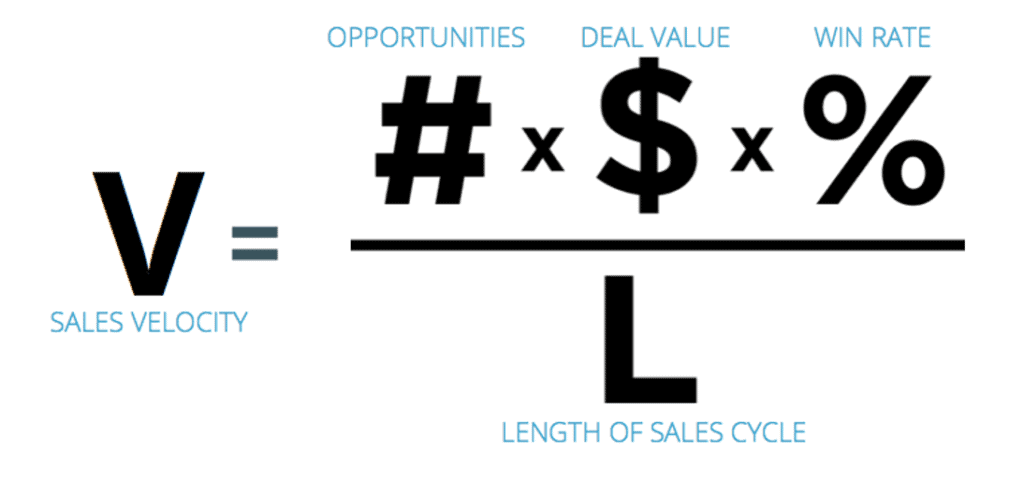In the mid-nineties I was educating myself on supply chain practices in my pursuit of a manufacturing prospect and I couldn’t have predicted how this would impact my entire sales career. The pivotal moment was when I read, The Goal by Eliyahu Goldratt who introduced the ‘Theory of Constraints’ management philosophy to the world. In a nutshell it is the idea that any system has constraints and the best use of time is to address the most limiting constraint first and then move on to the next – I just saved you 376 pages… [‘The Goal’ is actually worth a read because he teaches you in the context of a fast-paced story.].
It sounds really simple, but the key predicate is that you have the data that tells you where the biggest constraint is. If we were to translate this into our sales language, then many would assume it is best assessed using the sales velocity formula (Which is one of those things that I see sales execs regurgitate to sound smart, without actually knowing how to effectively us it):

Inspection of individual elements of this explain where our biggest pipeline constraints are, but is this really the sole source of inspection points for constraints? Almost. I will start by telling you that it is indicative (IE It points you to where you should dig) and doesn’t give you the full picture.
It is indicative: If win rate is declining, then we need to figure out the issue… It could be any one of the following:
- We are coming up against a specific competitor more often and they have outflanked us on product or sales execution
- We are ramping new reps and they aren’t yet where we need them to be.
- We are changing market segment and our assumption about ICP is wrong OR we just aren’t effective yet.
- Our product development is not keeping pace with the market
This being the case, we need to figure out the source constraint relating to the correlated indicator (Win rate).
It doesn’t give the full picture: Do you want to know the biggest constraint on a scaling org? Talent. If we are falling behind on our hiring plan it won’t show up in the sales velocity for a cycle or two, because almost every sales team can absorb more opportunities (to a point).
The theory of constraints teaches us to focus our efforts on the tightest constraint and then move on to the next – Imagine a 1″ diameter hose with one 1/2″ pinch gap and another 1/4″ pinch gap. It doesn’t matter how much we enlarge the 1/2″ until we widen the 1’4″.
The role of ops and enablement: The diagnosis of where to spend time is a partnership of Revenue/Sales Ops, who can direct our attention, and Enablement, who can diagnose the root issue and solver for it. The question I have of all enablement functions is: “How do we know that this is the most important constraint to be working on right now?” Too often our development programs are driven by the whims of a zealous sales VP who overhears a couple of bad calls and decides we need to roll out an objection handling program, leading with emotion and not data.
How to do this in real life: I am a huge fan of the ‘Three amigos’ monthly meeting, which is Marketing, Sales Development and Sales, all being chaired by Sales Operations in a review of the metrics that matter. The output of this meeting is a directional understanding of where the critical constraints are and how to prioritize resources in the weeks ahead.
We teach these principles and how to make it happen at your organization in our front line AE manager and SDR manager programs.
NOTE: Altify (Originally the TAS Group) provide training and tools in sales process management that are focused on improving sales velocity. I was trained in TAS twice in my early career and can wholeheartedly endorse the efficacy of their approach)



